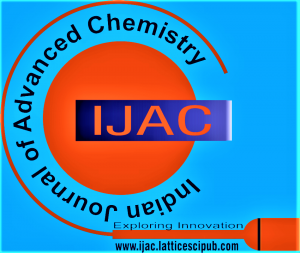![]()
Molecular Docking, Simulation Against SARS-COV-2, Theoretical Study (DFT) and Superoxide Anion Scavenging by Cyclic Voltammetry of 2-Hydroxyphenyl Imino Naphthalen-2-ol
Noudjoud HOUAS1, Siham KITOUNI2, Assia TOUNSI3
1Noudjoud HOUAS, Laboratory of Electrochemistry of Molecular Material and Complex (LEMMC), Department of Process Engineering, Faculty of Technology. University of Ferhat Abbas Setif-1, Setif 19000, Algeria.
2Siham KITOUNI, Laboratory of Electrochemistry of Molecular Materials and Complex (LEMMC), Department of Process Engineering. Faculty of Technology. University of Ferhat Abbas Setif-1, Setif 19000. Algeria.
3Assia TOUNSI, Laboratory of Electrochemistry (LEM) and Materials. Department of Process Engineering. Faculty of Technology. University of Ferhat Abbas Setif-1, Setif 19000. Algeria.
Manuscript received on 01 October 2023 | Revised Manuscript received on 12 October 2023 | Manuscript Accepted on 15 October 2023 | Manuscript published on 30 December 2023 | PP: 1-8 | Volume-3 Issue-2, October 2023 | Retrieval Number: 100.1/ijac.A202404010424 | DOI: 10.54105/ijac.A2024.03021023
Open Access | Ethics and Policies | Cite | Zenodo | Indexing and Abstracting
© The Authors. Published by Lattice Science Publication (LSP). This is an open access article under the CC-BY-NC-ND license (http://creativecommons.org/licenses/by-nc-nd/4.0/)
Abstract: The simulation in terms of enzymatic activity and the estimation of the process transfer of electronic active sites of the synthesized compound: 2-hydroxyphenyl imino naphthalen-2-ol (Schiff basis) required the use of valuable calculation programs such as the docking, for which we used the Arguslab program and the Gaussian endowed to the calculation of the functional density theory of the molecule studied. And as the experimental study designed under difficult, costly or sometimes impossible conditions, the docking program simulates the molecular binding of the protein target with the ligand, which can reveal the arrangement of the hydrogen and hydrophobic bonds that link the active sites and the ligand; it is an economical step in terms of time and money that can lead to the selectivity of the product of interest in drug manufacturing. In this context, we are currently focused on the study of the inhibitory effect of this molecule with the enzyme (6lu7) fighting against covid-19, and have compared it to the drug chloroquine. The obtained results show that the calculated Gibbs free energy with protease is -9.215 Kcal/mol, which is almost more inhibiting than chloroquine (-7.2652 Kcal/mol). The DFT method allowed us to estimate that the potentially positive sites easily cede an electron when they are brought into contact with oxidizing species during the reduction reaction. The study of the superoxide anion scavenging activity via this product is performed practically by electrochemical way, the Gibbs standard energy (-16.9022 KJ/mol) explains that the reaction can spontaneously form very stable inactive species with the oxidizing ion.
Keywords: Antioxidant Activities, DFT Calculations, Molecular Docking, Schiff Bases.
Scope of the Article: Pharmaceutical Chemistry
